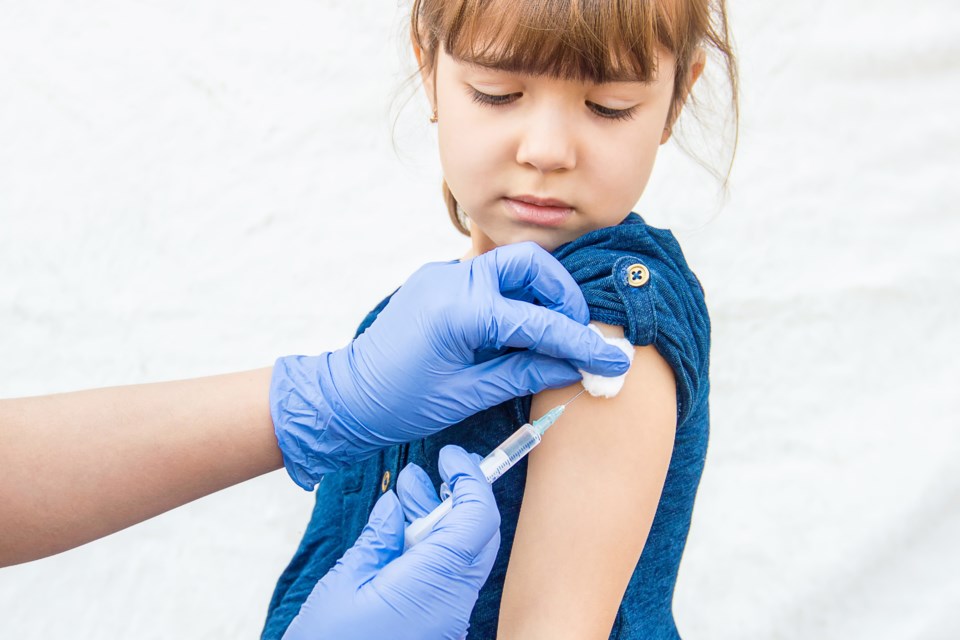I didn't know my cousin Ann very well.
She lived with my aunt and her family in Atlanta, Ga., and I lived worlds away as my family travelled to different countries thanks to my father's work.
But one visit with her family will always stay with me. I was in Grade 10, and as we all gathered around Aunt Yvonne's enormous kitchen table, complete with its own Lazy Susan so we could all share the abundance of her garden, she quizzed my mom on the status of all our immunizations as we went from place to place.
Top of her list: measles.
As she asked, I noticed her hand reach out to hold her daughter Ann's. In a quiet voice, she reminded my mom, her little sister by 12 years, of the price she paid for not immunizing against measles. It was clearly a cautionary story my mom had heard many, many times, but its power over the whole family was palpable.
Aunt Yvonne was exposed to measles while she was early in her pregnancy with her only daughter. The exposure caused Ann to have a severe intellectual disability.
To us, Ann was just Ann, but to my aunt, who loved her daughter fiercely and who worked tirelessly until her last breath to prepare Ann and her many friends for life on their own, she became a symbol of why immunizations are not discretionary.
Today, social media is rife with anti-vaxxer rhetoric all based on poor science and fear. Indeed, this week YouTube stopped serving ads to lots of popular channels that promote such views. Many YouTube channels pushing anti-vaccination conspiracy theories will no longer get money from adverts. The company took the step following protests from firms who discovered their adverts were running alongside the controversial videos.
Much of the recent backlash can be traced back two decades when a paper in the Lancet medical journal falsely linked the measles, mumps, and rubella vaccine to autism and other health issues.
That paper was debunked, retracted and the author, Andrew Wakefield, lost his medical licence over it.
But irrational fears persist, fed by misinformation, and they are now driving down immunization rates across the board. Factor into this religious views, complacency and what the World Health Organization (WHO) refers to as "vaccination hesitancy"—the growing reluctance to take advantage of proven, life-saving vaccines—and we are facing one of the top threats to global health.
Since B.C.'s own measles outbreak started several days ago—thanks in part to a family that didn't get their kids vaccinated and then contracted the disease in Vietnam and returned to spread it from Vancouver to Whistler—the media has been filled with news stories on the dangers posed by measles and opinions about why vaccines are not needed, are a matter of personal choice, and even that catching measles is no big deal.
But consider this: A recent WHO report on measles epidemics shows that cases jumped by 50 per cent last year. In one of the poorest and least-connected countries in the world, Madagascar, nearly a thousand children are reported to have died after a measles outbreak in the countryside. In the most recent outbreak in the Philippines, more than 130 people have died of the disease, most of them children.
Before 1963, measles killed 2.6 million people a year.
Because of the way that herd immunity works, parents who don't immunize are threatening other people's children, too, some of whom cannot be vaccinated for medical reasons.
The herd immunity threshold depends on the disease, but hyper-contagious diseases like measles require 90- to 95-per-cent vaccination levels for herd immunity to be effective.
Measles is one of the most contagious diseases known to humans. The virus can live in a room for up to two hours after an infected person spreads it by coughing or sneezing. It will infect 90 per cent of the unprotected people who come in contact with it.
Those who are infected can get pneumonia and encephalitis. They can be left with blindness and brain damage, among a host of other complications. Even today, it kills about 100,000 people a year around the world, most of them under the age of five.
Whistler is just waiting for its own outbreak from the Feb.18 contamination. Symptoms (fever, cough, runny nose, red eyes, followed by a rash that can start on the face and spread to the chest) can start to show seven to 14 days after infection.
Don't be selfish—get vaccinated and get your kids vaccinated.




